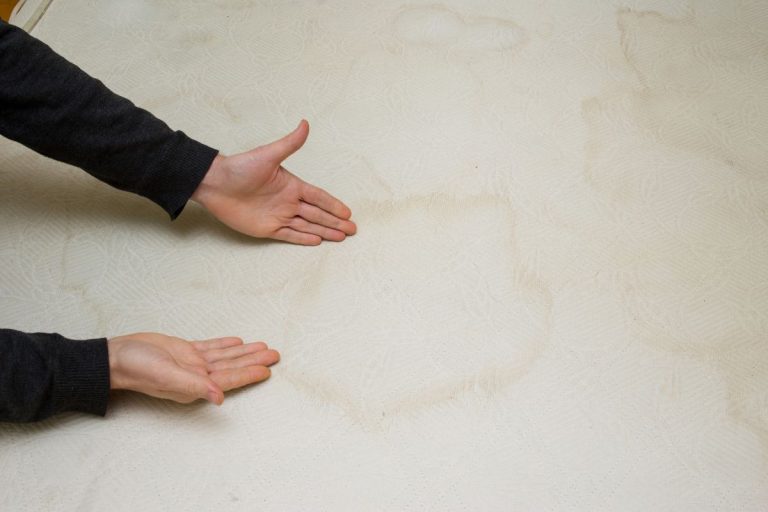Sciatica is a well-known pain for a lot of people. It is characterized by radiating and annoying leg pain, as well as related disabilities and health problems. Sciatica is also referred to as ischias, nerve root pain, lumbosacral radicular syndrome, and nerve root entrapment.
But, regardless of how you call it, in 90% of all cases, sciatica is caused by a herniated disc and nerve root compression. It often occurs in people who experience low back pain but can also occur in people who don’t have back problems at all.
Luckily, sciatica can be treated. The treatment usually involves pain reduction, either by medicine or by exercises intended to lower the nerve root compression. But, not all exercises seem to be suitable for sciatica treatment.
Therefore, in the following paragraphs, we’ll take a look at exercises you should COMPLETELY AVOID if you want the pain to go away fast. So, let’s get started!
Sciatica: Quick Overview
What Is Sciatica?
Sciatica is a condition caused by the compression of the sciatic nerve. The sciatic nerve is the longest and the widest in the body, so, when it gets irritated and compressed, it causes a lot of pain and related disabilities. In the majority of cases, sciatica affects only one side of the body.
Note: For example, the pain starts in the lower back, then moves to the back of the thigh, all the way to the foot and toes of one leg. So, one leg is pain-free, while all the pain is concentrated in the lower back and the other leg.
What Causes Sciatica?
Sciatica is in the majority of cases caused by a herniated or slipped disc. To have a herniated disc means that the disc in the spine has slipped or moved in such a way to put additional pressure on the sciatic nerve that is placed between the discs.
When this happens, the spinal column gets disrupted in the sense that it loses its ability to move, bend, and stay flexible, because of the pain. However, sciatica doesn’t have to be caused by a slipped disc. It can be a result of spinal infection, spinal tumor, degenerative disc disease, lumbar spinal stenosis, etc.
Who Is At Risk For Sciatica?
Sciatica often appears in adults, between the age of 40 and 60. Moreover, it also tends to occur in adults who lead a sedentary lifestyle, since physical inactivity affects the flexibility of the spine negatively. Not to mention that, if you’re sitting at the office the whole day, or you lift heavy loads regularly, you’re also at risk of developing sciatica at one point in your life.
How Is Sciatica Treated?
Sometimes, the sciatic pain can diminish over time, without any specific treatment options and measures. People with sciatica should stay active and continue with their daily activities.
Moreover, it is recommended to do a set of prescribed exercises as well. However, in case the pain is extreme, one can take paracetamol, anti-inflammatory drugs, tramadol, or other drugs that help relieve the pain.
Eventually, if the pain doesn’t subside in a period between 6 to 8 weeks, one needs to contact their doctor, a neurologist, or orthopedic surgeon for detailed observation, diagnosis, and more focused treatment.
So, What Exercises Should You Avoid If You Have Sciatica?
1. Bent-Over Row
The bent-over row is usually a rather beneficial exercise. It involves the whole body but mostly targets the back and the arms. However, it can be easily done wrongly, which can cause more pain and additional compression of the sciatic nerve. Not to mention that doing these exercises in an improper form puts a strain on the whole back and increases the risk of a herniated disc even before it happens. So, make sure to avoid this exercise if you don’t want to worsen your pain and sciatica symptoms.
2. Leg Exercises
Leg exercises like leg lifts, or leg circles can apply unnecessary pressure to the lower back, the slipped disc, and the sciatic nerve. The exercises can cause harm and prolong or worsen the pain in the back and the leg. So, make sure to avoid leg exercises that irritate the nerve and engage the lower back and the leg muscles. While we’re at it, you should probably want to avoid yoga, pilates, and circuit training, because each one focuses on the lower back and the legs.
3. Double-Leg Lift
Since we mentioned leg exercises, we have to put a special emphasis on the double-leg lift exercise. This one can put too much pressure onto your abdominal muscles, lower back, and both legs, worsening your sciatic pain much more than you can imagine. You can over-stretch each of the aforementioned areas and the muscles in these areas. This can not only result in worsened pain but also potential injury.
4. Full-Body Squat
Doing full-body squats, with or without weights, isn’t recommended for people with sciatica. The main reason is that the squatting position can put unnecessary pressure on the lower back and cause further nerve and spinal damage. Not to mention that full-body squats put pressure onto the thighs and legs as well, which can worsen the sciatic pain in the leg as well. Either way, squats are a no-go in cases of lower back conditions like sciatica.
5. Weightlifting
Lifting weights often requires adequate support for the lower back and often has the body in a squat-like position. In cases of sciatica, this can be a complete disaster, since lifting weights can cause serious spinal damage and injury. It puts additional pressure on the spinal column, and in cases of a slipped disc, the additional pressure further damages the disc and irritates the nerve. So, make sure to avoid lifting weights if you’re experiencing sciatica. Furthermore, even when you’re healthy, make sure to lift weights only with adequate lower back support.
6. Abdominal Stretches
Generally, stretching is not welcome when it comes to sciatica. However, abdominal stretches are surely a no-go. This exercise can cause a lot of harm to your spine and the lower back because stretching creates more pressure on the disc in the back. This causes the disc to wear out faster and even tear during exercising. As a result, one can experience incredible pain and maybe even a lower back injury. So, make sure to avoid abdominal stretches at all costs.
7. Rotating Stretches
Rotating stretches are good when your back is healthy, but when you have sciatica, they can be disastrous. When you rotate to stretch, you’re moving your pelvic area alongside the lower back. This directly moves your herniated disc, misplacing it further and causing it to irritate the sciatic nerve even more. This puts a lot of pressure onto the back, the pelvic area, and the spine.
8. Touch-The-Toes Stretches
This is a standard exercise; every time people experience back pain they tend to stretch by bending towards their toes. Well, this is a mistake, because when experiencing back pain, you should be stretching backward, not forward. The touch-the-toes stretch puts additional pressure onto the disc, even though it may be good for the muscles. The disc is compressed and the nerve is further irritated and being worn out.
9. Running
Running can create an exceptional amount of stress for your lower back and leg. If you have sciatica, you need to avoid exercises like running, because they can jar the spine and worsen all of the sciatica symptoms. Running involves all the movement that aggravates the sciatic nerve, so make sure to avoid it until the sciatica symptoms diminish.
How Can I Avoid Exercise Injury With Sciatica?
- Prepare Your Lower Back For Exercise – This means that you should stimulate the soft tissues in the lower back and the leg with some heat therapy. For example, you can apply some heat to your lower back for 10 to 15 minutes before exercise. This can improve blood flow and stretch soft tissues. As a result, the muscles around the spine will be more flexible and you will achieve a greater range of motion without injuring yourself.
- Start Easy – If you’re trying to do some exercising with sciatica for the first time, it is essential you start easy. Start with low-impact exercises, and only exercise for 5 to 10 minutes. Try using a stationary bike, elliptical machine, or maybe even water therapy. You can even go for a walk or go for a swim if you want to avoid strenuous exercises that might cause you pain.
- Consider Your Exercising Posture – Correct posture is essential when doing exercises. A proper form helps you do the exercises better and also avoid possible injury. So, if you have sciatica, and you want to exercise, make sure to be focused on proper posture and the exercises rather than the pain. However, if the pain becomes greater than usual, then either the exercise is wrong for you or your posture is incorrect.
- Exercise Regularly – Regular exercise is essential for sciatica. It can help you strengthen the muscles and joints in the spine, especially the spinal discs. This way, everything will be in place and remain so, reducing the pressure on the nerve roots. Furthermore, regular exercise can reduce the recurrences of sciatica, and even if it happens again, it won’t last as long.
Final Thoughts
If you have sciatica and you want to exercise, make sure to talk to your doctor for more information and advice. Your doctor will tell you which other exercises to avoid, and what exercises to actually do. It is essential to get a proper diagnosis because only then will you get proper treatment and training recommendations.
More Resources Related to Sciatica:





